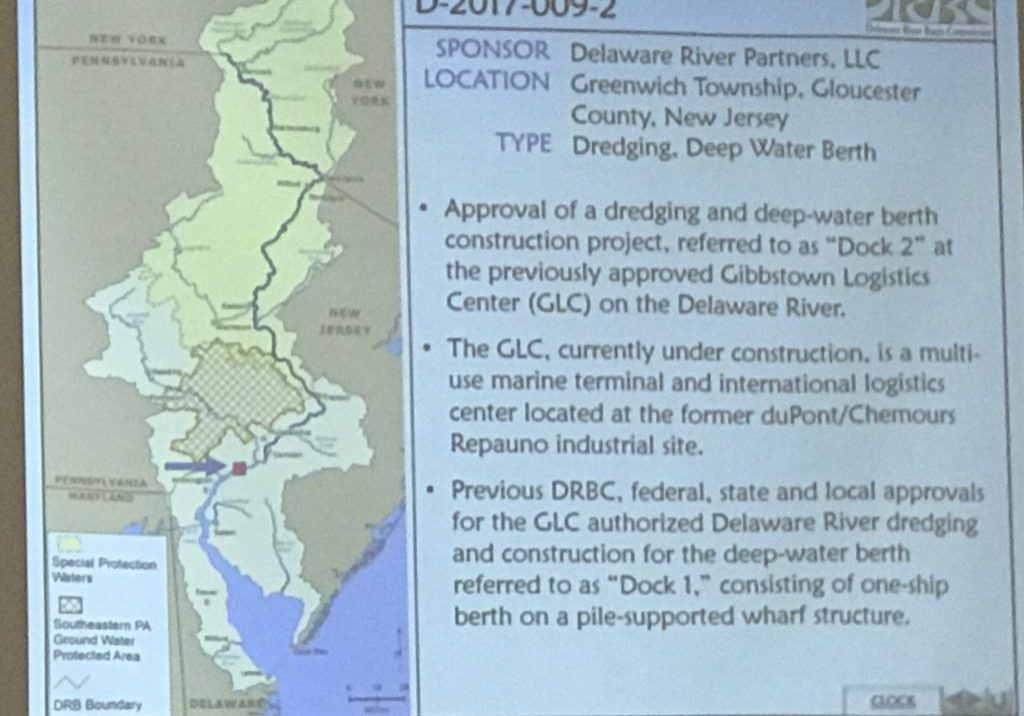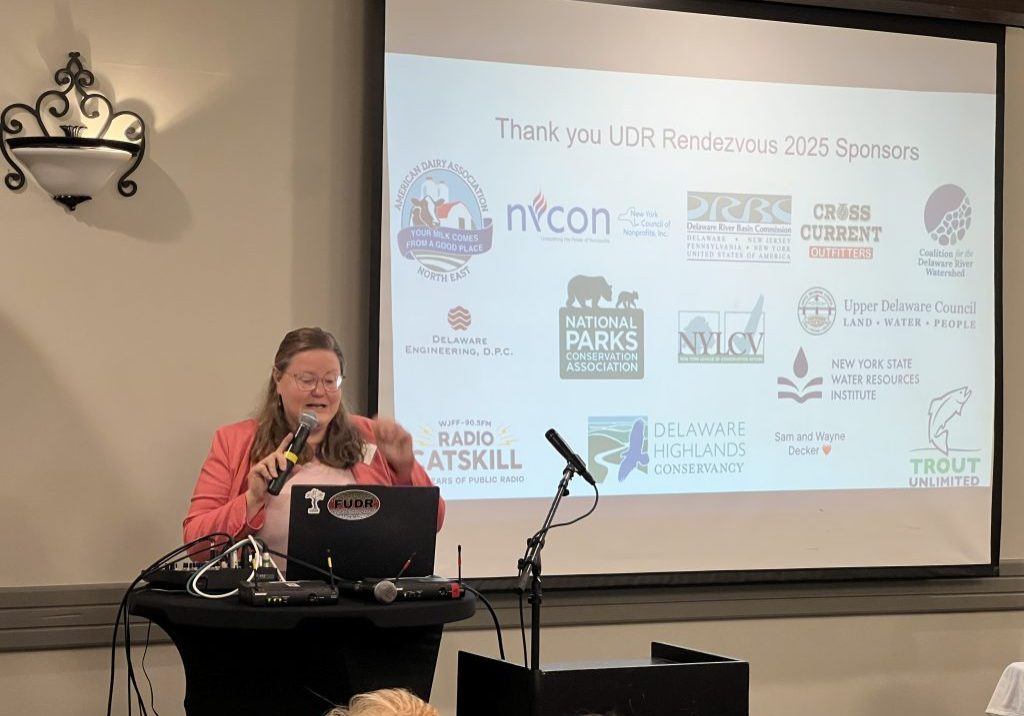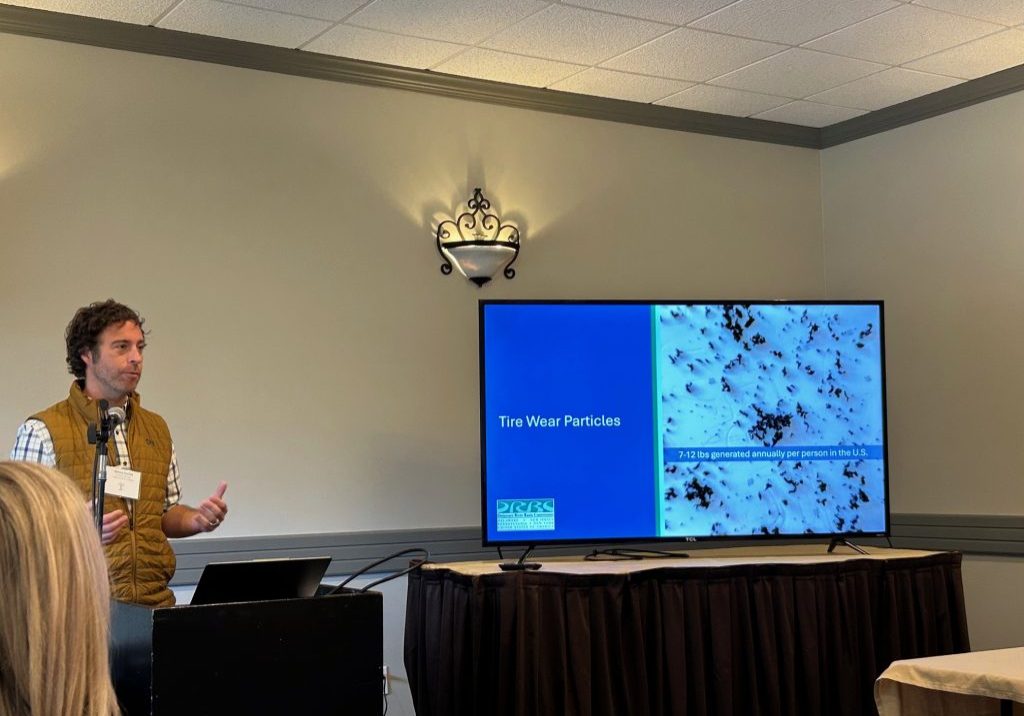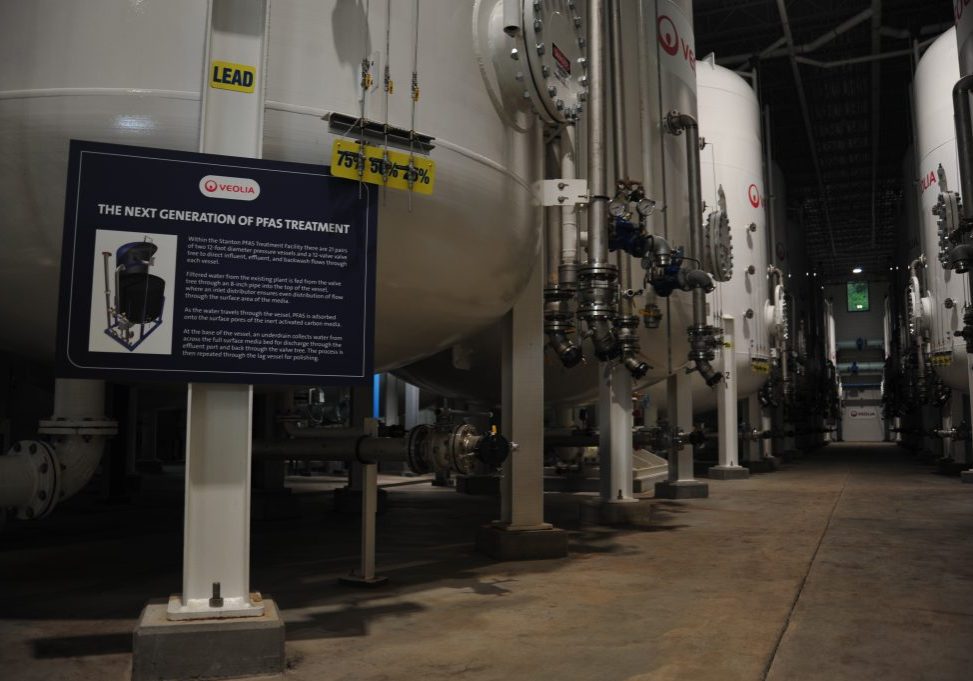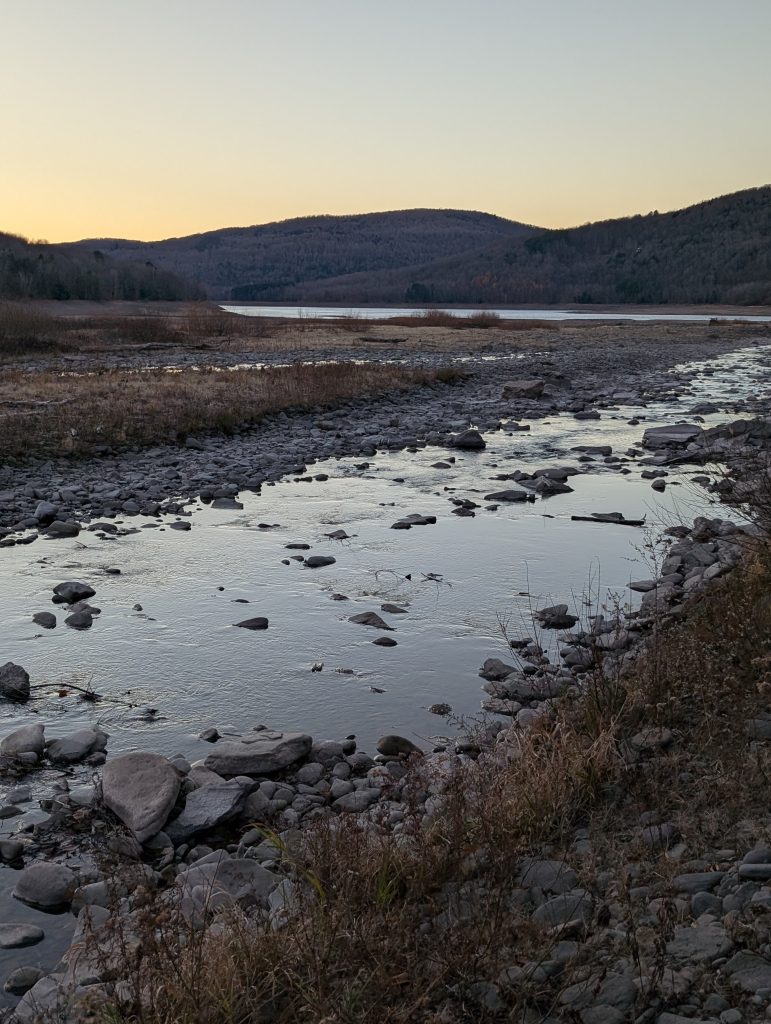
Delaware River watershed drought: Good for the birds, the trout – not so much
| December 23, 2024
Dry conditions have prompted the posting of drought watches and warnings in many pockets of the Delaware River watershed, and the declaration of a “water supply emergency” by the Delaware River Basin Commission.
Though the river itself is not in a state of drought, fish and wildlife in the watershed are feeling the impacts of the prolonged lack of precipitation — in ways both positive and negative.
The Friends of the Upper Delaware River, an organization focused on protecting and restoring the Upper Delaware River watershed, is concerned about the river’s brown and brook trout populations.
“It’s a perfect storm of conditions during a critical time for trout, particularly the brown trout that are spawning in the fall,” said Jeff Skelding, the executive director of FUDR.
Brown trout spawn from October into November, shortly after brook trout, which spawn from September into October. Lower water levels can leave their eggs more vulnerable to desiccation, ice and predators.
Skelding is concerned what the spring and summer seasons will look like for the Delaware River’s wildlife if rainfall does not pick up. It will take several months of average- to above-average precipitation to relieve drought conditions, and come summer, there will be a much greater demand on the water supply from the Delaware River’s reservoirs.
The Cannonsville, Pepacton and Neversink reservoirs are not only repositories for drinking water, they are also a tool used to handle other effects of the lack of rainfall, including meeting the river’s flow targets and repelling the encroaching salt front, the place where the freshwater of the Delaware River meets the saltwater of the Delaware Bay.
“We’re concerned that if these conditions continue, they’re not going to be able to fill up those reservoirs by June 1st, and that will have a lot more negative knock-on effects for wildlife,” Skelding said. “The rainbow trout spawn in the spring. They’ll need adequate water levels too.”
Timing is important
While dry conditions persist throughout the watershed, there is less danger to wildlife in the stretches of the Delaware River through New Jersey and Pennsylvania, in part because of the time of year when the lack of the precipitation has happened.
“If we’re going to have a drought, we’re fortunate that it’s occurring from the fall into the winter,” said Shawn Crouse, chief of the Bureau of Freshwater Fisheries at New JDEP’s Fish & Wildlife division. “During the summer there’d be a higher prevalence of negative impacts, you would see more fish kills and more fish disease.”
In the summer, water temperatures are higher and the oxygen levels in water are lower, putting more stress on fish at a time of year when they and their metabolism are more active and have a larger demand for food. In contrast, during the winter, water temperatures are lower and oxygen levels in the water are higher. Fish’s activity and their metabolisms slow down and they need to consume less, so the impact of the drought on the macroinvertebrates and aquatic plants that the fish rely on for food may not be felt as keenly at this time of year.
“The macroinvertebrates in the shallows could desiccate or freeze, but we’re really not that concerned, because many of the macroinvertebrates that live in the river are resilient, and they’ll just recolonize and repopulate come spring again,” Crouse said.
Drought is for the birds
Up the food chain, waterfowl may have an easier time finding food.
“If there’s less water, foraging for bald eagles and waterfowl should actually be a little bit easier, since the fish are a little bit more concentrated,” Crouse said.
Conditions in the river have also been helped by the water released from the reservoirs upstream.
“We have to maintain certain minimum flows to keep the salt line away from Philadelphia,” Crouse said. “That’s where I think the environment wins as a secondary need of human drinking water.”
Unlike in the Upper Delaware, trout spawning seasons are less of a concern in the stretch of the Delaware River that passes through New Jersey and Pennsylvania.
“We don’t have year-round trout supporting conditions, so we actually don’t get any spawning,” Crouse said.
Brook trout, New Jersey’s only native trout species, do spawn in other parts of the state and some tributaries of the Delaware River.
“They are, for the most part, relegated to headwater streams,” Crouse said. “Fortunately, headwater streams have a lot of groundwater or springs feeding them, so they’re generally more consistent during summertime high temperatures or drought situations.”
Wildfires being fed by the dry conditions
The dry conditions in the four states of the watershed have led to wildfires. The impact that these fires may have had on the Delaware River and its tributaries has not been evaluated yet, but the NJDEP has plans to do so.
In the spring, Justin Rozema, the NJDEP’s assistant fisheries biologist, will take a team to survey an area that may have been affected by wildfires.
“He is planning to do a fishery survey in proximity to one of the wildfires, in an attempt to determine its impact,” Crouse said. “The major threat there would be lost forest canopy, because that would allow additional solar impact on the stream, warming it up.”
As the impacts are being measured, Skelding worries about the future.
“As we manage this drought, with climate change, we’ve got to acknowledge that future droughts are a real possibility,” he said.



